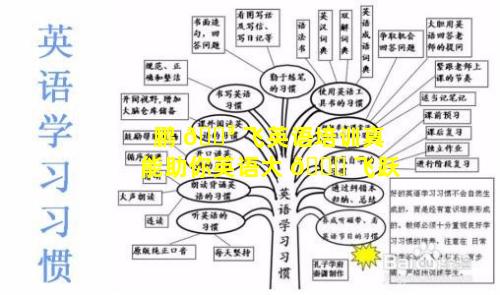高一暑期英语培训老师工作状况怎样
- 作者: 陈安芃
- 来源: 投稿
- 2024-10-01
1、高一暑期英语培训老师工作状况怎样
高一暑期英语培训老师工作状况
工作职责:授课英语课程,包括语法、词汇、阅读理解、写作等。
备课,准备教学材料和教案。
批改作业和试卷,提供反馈和指导。
与学生和家长沟通,了解学生学习情况。
参加教研活动,提升教学水平。
工作时间:暑期培训期间,工作时间通常为周一至周五,上午9点至下午4点或5点。
具体工作时间根据培训机构安排而定。
工作环境:培训教室或在线教学平台。
学生人数通常在1530人之间。
工作强度:工作强度中等至高。
备课和授课都需要花费大量时间和精力。
批改作业和与学生沟通也会占用一定时间。
收入:根据培训机构规模、课程设置和教师资质而定。
一般来说,高一暑期英语培训老师的收入在每小时100250元之间。
工作状况:优点:
暑期工作,时间相对灵活。
帮助学生提高英语成绩,获得成就感。
积累教学经验,提升个人能力。
缺点:工作时间较长,备课和批改作业压力大。
学生水平参差不齐,教学难度较大。
收入不稳定,取决于招生和课时安排情况。
其他:一般要求英语专业或相关专业毕业,并具备一定的教学经验。
具备良好的沟通能力和耐心。
善于因材施教,制定个性化的教学方案。
能熟练使用英语教学软件和平台。
2、高一暑期英语培训老师工作状况怎样描述
高一暑期英语培训老师工作状况描述
工作职责:设计和实施高一暑期英语培训课程,涵盖语法、词汇、阅读、写作和口语等方面
根据学生的需求和水平调整教学计划
运用多种教学方法和材料,包括互动游戏、小组讨论和实际活动
评估学生进步,提供反馈并设定学习目标
处理学生咨询和学习困难,提供个性化指导
与同事合作,分享最佳实践并协商教学策略
维持一个积极和支持性的学习环境
工作环境:在暑期英语培训中心工作
与一群热心的学生一起工作
在一个快节奏和协作的环境中工作
拥有必要的资源和材料
定期与主管和同事沟通
工作时间:暑期期间,通常每周工作 57 天
每天工作时间可根据培训计划要求而有所不同
可能需要额外的时间进行备课和评估工作
薪资和福利:
薪资根据经验、资格和培训中心的规模而有所不同
可能提供福利,例如医疗保险、带薪休假和专业发展机会
技能和资格:
拥有英语教学资格证书或学士学位
具有扎实的英语知识和教学经验
精通多种教学方法和技术
具有出色的人际交往能力和沟通能力
能够在压力下高效工作
对学生学习充满热情

3、高一暑期英语培训老师工作状况怎样填写
岗位名称: 高一暑期英语培训老师
工作内容:教学:
为高一学生教授英语课程,包括口语、阅读、写作和语法
备课、上课、批改作业和提供课后辅导
根据学生的学习差异化教学,制定个性化的教学计划
课程管理:
负责课堂纪律和教学进度管理
组织和开展课堂活动、竞赛和项目
根据教学目标和进度评估学生的学习成果
沟通和合作:
与家长、学生和同事沟通,讨论学生的学习进展和需要
参与教学团队的协作,共享教学资源和经验
专业发展:
参加培训和研讨会来提高教学技能和知识
阅读专业文献和研究成果来了解最新的英语教学方法
工作时间:具体工作时间根据培训机构安排,一般为周一至周五,每天上午或下午时段
其他要求:英语专业知识扎实,拥有英语教学经验者优先
良好的沟通、人际交往和组织能力
具有责任心、耐心和奉献精神
具备良好的课堂管理能力和教学创新能力
4、高一暑期英语培训老师工作状况怎样写
英文版:Work Experiences as an English Teacher for High School Summer Camp
Introduction:
This summer, I worked as an English teacher for a high school summer camp. This experience provided me with valuable opportunities to develop my teaching skills and to gain experience working with high school students.
Responsibilities:
My responsibilities included:
Planning and delivering daily English lessons
Creating interactive and engaging activities
Assessing student progress and providing feedback
Maintaining a positive and supportive learning environment
Lesson Preparation:
To prepare for my lessons, I researched various topics and developed engaging activities that were tailored to the students' interests and learning styles. I utilized a variety of resources, including textbooks, online materials, and games, to create a dynamic learning experience.
Teaching Methods:
In my lessons, I employed a variety of teaching methods to accommodate different learning styles. I used group discussions, role plays, and presentations to encourage student participation and critical thinking. I also incorporated interactive activities, such as games and puzzles, to make learning more enjoyable.
Assessment and Feedback:
I assessed student progress regularly through quizzes, homework assignments, and oral presentations. I provided constructive feedback to help students identify areas for improvement and to encourage their growth.
Student Management:
Maintaining a positive and supportive learning environment was crucial to the success of my teaching. I established clear expectations and rules for behavior, and I worked to create a respectful and encouraging atmosphere. I addressed student concerns promptly and provided support when needed.
Professional Development:
This experience also provided me with opportunities for professional development. I attended workshops on effective teaching strategies and classroom management techniques. I also engaged in selfreflection and sought feedback from colleagues to improve my teaching practices.
Conclusion:
Working as an English teacher for a high school summer camp was a rewarding and educational experience. It allowed me to develop my teaching skills, gain experience working with high school students, and contribute to their academic progress. I am grateful for this opportunity and believe that it has made me a more effective and wellrounded educator.




